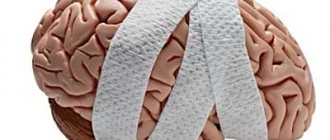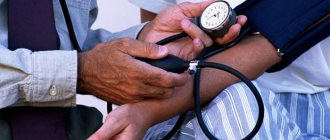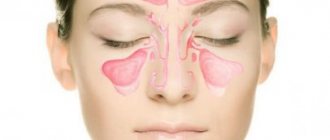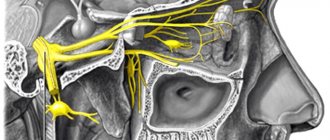Children and the elderly, athletes and pregnant women know firsthand about cramps. They usually take a person by surprise during sleep or falling asleep, bathing and sports training.
A cramp is a sudden, uncontrollable contraction of muscles with severe pain. Most often, this unpleasant phenomenon occurs with the calf muscles. As a result of a strong spasm, the foot extends in an unnatural position, as if the person is standing on his toes. The pain in this case can be called unbearable.
Causes of leg cramps
There are many causes of leg cramps, including:
- Lifestyle. Unfortunately, both an athlete who trains 5-6 hours daily, and an ordinary person who does not play sports at all can experience leg cramps. Only in the first case are they caused by excess load, and in the second by poor blood circulation, causing tissue hypoxia;
- Deficiency of certain microelements, in particular potassium, calcium, magnesium and vitamin D;
- Failure to comply with the drinking regime, causing dehydration;
- Taking medications with a diuretic effect. Along with excess fluid, not only sodium, but also potassium and magnesium “leave” from the body. This increases the risk of leg muscle spasms. Hormonal contraceptives also have a similar effect. Muscle cramps can occur as a side effect when taking statins, nifedipine, Ventolin, Proventil and other medications;
- The presence of chronic diseases: cardiovascular disorders, endocrine disorders (diabetes, hypothyroidism), obesity, varicose veins, neurological diseases, cirrhosis of the liver and many others;
- Pregnancy. Convulsions during this period are associated with a deficiency of microelements, increased load on the lower extremities, anemia, varicose veins;
- Age. The loss of muscle tissue begins after the age of 40, so up to 50-60% of older people experience cramps. Progress is observed in the absence of sufficient physical activity and poor nutrition.
The risk increases if a person wears uncomfortable shoes, spends the lion's share of working time on their feet, and is also overweight. A problem such as leg cramps, causes and treatment, must be resolved by a doctor. They can appear even in a healthy person.
A comprehensive examination will rule out serious diseases and reduce the likelihood of spasms in the calf muscles.
Why do children have seizures?
During active growth, children also experience leg cramps. A child cannot always explain what he is experiencing, so the baby’s anxiety and crying should be a signal for close attention. You should check to see if the child’s feet are in an awkward position or if they are cold. A tense muscle is hard to the touch; during a cramp, the foot is in an unnatural position. As in adults, seizures in children can be associated with a lack of nutrients needed by the body.
Leg cramps: types and diagnosis
A sudden muscle contraction can be localized, involving only one muscle, or generalized, involving several muscle groups.
Depending on the duration of the spasm, they are divided into oblique – synchronous muscle tension, followed by relaxation, and tonic, in which the tone is maintained for a long time.
If leg cramps appear at night, treatment is prescribed by a therapist after studying the medical history and passing the following tests:
- General blood and urine analysis;
- Blood biochemistry and sugar levels;
- Ultrasound of veins and other organs (if necessary).
The doctor may refer the patient to specialists for consultation or prescribe an extensive examination.
Symptoms
It is difficult to confuse a spasm with the manifestation of another disease. At the same time, convulsive muscle contractions vary in different cases, which helps to make a diagnosis.
- strong muscle tension, manifestation of relief;
- lack of control over limbs;
- the hand is clenched into a fist or straightened as much as possible;
- sharp sharp or nagging pain;
- skin changes color (in case of poisoning);
- spasm gives way to relaxation, twitching occurs (with problems with the central nervous system).
Additional symptoms accompanying seizures are an indicator of a serious illness. If during an attack your vision darkens, your blood pressure rises, nausea and dizziness appear, then you have problems with the nervous system. With rare exceptions, this is associated with severe stress.
First aid for seizures
If you wake up from a cramp attack, it is recommended to do the following to reduce the pain:
- Massage the lower leg (first around the painful area, gradually approaching the epicenter);
- Try to stretch the muscle by pulling the foot towards you;
- Lower your cramped leg to the floor and try to walk on a cold and smooth surface (tiles, linoleum, but not soft carpet);
- Apply cold, such as ice, or apply heat (heating pad, ointment, etc.).
If your leg cramps during the day, then first of all you should stop the activity that caused the spasm. Traditional techniques, such as piercing the skin with a needle or taking antispasmodics (analgin, aspirin), should not be tested in practice on your own. You should consult your doctor about the possibility of using such drugs.
Cramps of the lower extremities
More often, convulsive contractions are observed in the calf muscles of the legs. Pain appears suddenly and often develops at night. Old people and children can experience excruciating pain. Statistics show that spasms mainly affect older people. The essence of the acquired state of muscle tissue is in a disturbed mechanism:
- muscle tissue consists of cells that have an electrical charge;
- there are sodium ions outside the cell, potassium ions inside;
- the balance of chemical elements lies in the contraction of cell membranes;
- if nerve impulses lose strength and intensity, calcium ions enter the cell;
- Subsequently, sodium enters the cell, displacing potassium.
The mechanism of convulsive contractions is formed with the help of opposite reflex displacements of sodium.
Leg cramps: treatment
The treatment strategy for leg spasms depends on the diagnosis and the presence of concomitant diseases. In most cases, an integrated approach is used, which consists of:
- Drug therapy - taking medications aimed at improving venous blood flow and strengthening blood vessels;
- Topical tonics - ointments, gels, creams that provide temporary relief and are intended to relieve swelling and reduce pain;
- Following a diet and wearing compression garments when cramps are associated with varicose veins;
- Massage and physical therapy to train the cardiovascular system and improve venous circulation.
Drug treatment for frequent seizures
Drug treatment for leg cramps:
- Phlebotropic preparations contain flavonoids that strengthen veins and capillaries, relieve swelling and have an anti-inflammatory effect, escin (horse chestnut extract) increases vascular tone, vitamin C and other active substances. Venotonic medications (Detralex, Venoruton, etc.) soften symptoms and prevent complications;
- A variety of topical gels, ointments and creams improve blood circulation, reduce pain, and reduce swelling due to a warming or cooling effect. This group includes “Troxevasin”, “Venozol”, “Actovegin”.
Diet for frequent cramps
To prevent night cramps, you should include foods high in calcium, potassium and magnesium in your menu. These are primarily dairy and fermented milk products, legumes, grains, fresh herbs, vegetable oils, dried fruits, seafood, as well as vegetables and fruits.
You need to avoid alcohol, strong tea and coffee - these drinks increase the risk of leg problems. In some cases, additional medications containing potassium, calcium, and magnesium are indicated.
Work and rest schedule for frequent seizures
It is recommended to give up professional sports and activities that involve prolonged stress on the legs (salesperson, pharmacist). If you are forced to spend most of the working day without moving, for example, sitting at a computer, then you should reconsider your lifestyle and engage in physical exercise.
If you don't have enough time, walking, cycling, swimming and other activities are suitable. To improve blood circulation in your legs, you can do simple exercises even in front of the TV - these are “scissors”, swings, “bicycle”. For a more professional approach to treatment, when your legs are cramped, it is recommended to contact the Kinesitherapy Center.
Arms and legs go numb: reasons and what to do. Signs of stroke and heart attack
Numbness of a limb is when an arm or leg becomes “woolly”, sensitivity is lost, or it burns and tingles as if with many small needles.
This often happens when peripheral nerves are compressed, say, if you “sit out” your leg or “lay down” your arm in your sleep. Numbness usually passes quickly and is not accompanied by other alarming symptoms.
Less commonly, numb limbs can indicate problems and illnesses, from a lack of B vitamins and folic acid to diabetes, multiple sclerosis or a brain tumor. But in these cases there must be other serious symptoms.
When is numbness a sign of a stroke?
Many people are scared that numbness is considered one of the first signs of a stroke. But in order not to panic in vain, remember: numbness in itself, without other signs, usually does not indicate a serious threat to health and life.
With a stroke, numbness occurs in any part of the body, but only on one side, and is certainly accompanied by some of these symptoms:
- weakness, dizziness, headache;
- loss of coordination, balance;
- nausea;
- speech disorder;
- facial distortion;
- blurred vision;
- disturbance of consciousness, orientation.
In detail: What is a stroke. How to recognize the signs
Numb arms/legs: reasons, what to do
1. The most obvious reasons are that the vessels are “pinched,” temporarily disrupting blood circulation, or the nerve fibers are “pinched.” For example, if you held your hand in one position for a long time (“got numb” in your sleep, your hand is constantly on the computer mouse, etc.).
In this case, it’s enough to just stretch and crush the limb so that everything is restored.
2. If your arms or legs go numb without obvious reasons and regularly, then most often this is due to peripheral neuropathy - damage to the nerve fibers leading to the extremities. It itself can be caused by diseases, which are most often associated with metabolic disorders and glandular dysfunction.
According to neurologists, the most common causes of such neuropathies are diabetes and alcoholism . In most cases, the legs become numb.
Shutterstock
3. In more rare cases, limbs may become numb due to injuries, physical overload, cervical arthritis, or a vertebral hernia that compresses the nerve.
What to do in this case depends on the reason. Sometimes resting and allowing the injury to heal is enough. With a cervical hernia, rest also helps, and discomfort is relieved with warm and cool compresses and pain relievers. Cervical arthritis is relieved by a medical cervical collar (brace) and physical therapy.
But if the numbness does not go away, then you need to see a doctor. Prescription medications or surgery may be needed.
4. Finally, arms and legs may go numb due to more serious diseases, such as multiple sclerosis, tumors, autoimmune, and hereditary diseases.
These cases usually present with other noticeable symptoms, ranging from muscle weakness, dizziness and nausea to loss of coordination, pain and even paralysis. Only doctors will help here.
Depositphotos
What if your fingers go numb?
Fingers may go numb separately with the same peripheral neuropathy, depending on which nerves are damaged.
If it is radial, then the thumb and index finger may become numb; if it is ulnar, then the thumb and half of the ring finger, etc.
Meanwhile, compression of the median nerve causes a disease called carpal tunnel syndrome, also known as carpal tunnel syndrome. It also manifests itself as pain and numbness in the fingers and is often found in those who hold their hands in one position for a long time: from gamers to pianists and cyclists.
Depositphotos
Kinesitherapy for the treatment of leg cramps
Leg cramps often lead to a number of problems that significantly reduce a person’s quality of life.
Sleep is disturbed, insomnia develops, irritability and nervousness appear. Specialists at the Kinesitherapy Center will identify the cause of nighttime attacks of leg cramps and help prevent them in the future. Kinesiotherapy is one of the most effective methods of combating diseases of the musculoskeletal system. Depending on the diagnosis, an experienced doctor will select an individual program of therapeutic exercises using modern exercise equipment and devices.
To achieve a therapeutic effect and get rid of sudden leg cramps, massage and other physiotherapeutic procedures are prescribed. Our branches are located in Zelenograd, Tver, Dubna and Klin.
The specialists of the Kinesitherapy Center will help you get rid of pain and muscle spasms that prevent you from enjoying an active life and movement!
Treatment Options
If spasms and twitching of your hands have become a daily problem for you, then you should seek help from specialists. There are several treatment options that can solve the problem.
Medication
Cramps are a specific symptom. Therefore, various drugs are used that help relieve pain, relax muscles, or eliminate mineral deficiencies.
During sleep, a person relaxes as much as possible from the stress of the day - physical and emotional. If internal discomfort appears, the peace of the night is disrupted. An unpleasant symptom can be numbness of the hands at night, which not only wakes you up, but also makes a person nervous and irritable during the day. This is not an independent disease, but an alarming signal. If your hands go numb at night, immediately consult a therapist and undergo a full examination to identify hidden pathologies.
MESSAGE FROM THE CHIEF DOCTOR:
Often, when examining a patient, doctors pay attention only to the bones, ligaments, and joints. At the same time, nothing is said about muscles
, the function of contraction of which plays a significant role in human life. Weakened muscles lead to thinning and deformed bones.
Unfortunately, common methods of therapy only aggravate the situation, leading to even more severe pain, muscle atrophy and a deterioration in the quality of life of patients.
Effective treatment is impossible to imagine without muscle restoration. Unique kinesitherapy technique
consists in a therapeutic effect, which implies, first of all, muscle activity during the methodical execution of a set of exercises on special simulators.
All exercises are performed by patients sitting or lying down, so there is no excessive stress on the joints and circulatory system, and our instructors-methodologists correct the technique of movements
and monitor the correct execution of actions.
Remember that diseases of the spine and joints are not a death sentence; if the patient wishes and the right approach to treatment, everything can be corrected!
What is hand numbness
Officially, the unpleasant symptom is called paresthesia of the limbs. According to the terminology, this is a temporary loss of sensitivity, which is characterized by sensations of numbness, accompanied by a feeling of tingling, crawling on the skin. The condition develops equally at any age; at first it goes unnoticed, but is fraught with complications. This is a physiological (natural) phenomenon, for example, when the position of the body changes, or pathological, indicating an internal disease.
When your hands go numb at night, this unpleasant symptom cannot be ignored, otherwise the problem will only get worse. If your hands go numb, then when you move your fingers you feel a slight tingling sensation, painful sensations that are paroxysmal in nature, focal localization. The patient complains of:
- difficulties in coordinating actions;
- inability to use a limb;
- lack of response to external stimuli;
- loss of sensitivity not only of the skin, but of the entire arm/hand.
To exclude cardiac pathologies, first of all, the doctor orders an ECG and additionally collects data (history). The symptom is diverse, and the examination of the body must be comprehensive, including instrumental and laboratory methods, and differential diagnosis. You can contact:
- therapist;
- neurologist;
- cardiologist.
With an unpleasant symptom, a serious disease is not always found. It is possible that the problem is physiological in nature. These are the most common reasons that deprive you of sleep and rest, but they are temporary and are replaced by a long period of remission. Reasons include:
- incorrect position of the body during sleep;
- narrow cut or synthetic fabric pajamas;
- excess coffee in the body in the evening;
- poor-quality sleeping furniture, narrow or too thin mattress, uneven surface (for example, if the furniture unfolds);
- rare change of position during sleep.
Hands go numb in pregnant women, which is associated with physiological changes in the female body against the background of doubled blood flow and the fetus growing in the womb. Since the baby puts excessive pressure on the internal organs, especially when moving in the uterus, local oxygen starvation prevails. It is accompanied by numbness of the soft tissues. Before looking for a pathological process, it is necessary to eliminate all physiological factors from the patient’s life. We should not exclude more serious diseases, for example, dangerous and widespread:
- arthrosis;
- atherosclerosis;
- vegetative-vascular dystonia.
Diseases
With an acute lack of vital microelements, especially thiamine (vitamin B1), hands often go numb during sleep. To eliminate the symptoms of progressive vitamin deficiency, it is recommended to include natural vitamins and multivitamin complexes in your daily diet. This is the most insignificant and least dangerous reason for health why an unpleasant symptom appears. Pathologies can be more global, most of them are chronic, some lead to death.
Among the main reasons why hands become numb during sleep are the following diseases and pathological processes in the body:
- osteochondrosis of the cervical spine, which is characterized by compression of the spinal nerves;
- scalene muscle syndrome (pain begins in the shoulder girdle and cervical area along the ulnar part of the arm);
- Carpal tunnel syndrome, when the nerves between the wrist bones and muscle tendons are compressed;
- tunnel syndrome (more often progresses in women after 40 years of age, professional musicians, programmers, workers in printing houses, publishing houses, typesetters, professional athletes - tennis players, during active training);
- vascular circulation disorders caused by diabetes, cardiac ischemia, anemia, stroke, micro-stroke, ischemic stroke;
- autonomic disorders, supplemented by innervation disorder;
- arthritis, rheumatoid arthritis (in the latter case, the nerves come under attack when joints are deformed);
- degenerative processes of the central nervous system, neuropathy, acute migraine attacks, rheumatism, solar plexus neuralgia;
- vascular diseases such as Buerger's disease, atherosclerosis, Raynaud's syndrome;
- systemic collagenoses, for example, periarteritis nodosa, scleroderma, lupus erythematosus;
- inflammatory processes in the nerves;
- pinched nerve roots;
- cardiovascular diseases;
- multiple sclerosis;
- diabetes;
- cirrhosis of the liver;
- intervertebral hernia;
- arterial hypertension;
- oncological diseases.
Incorrect body position
In this case, we are talking about arbitrary compression of internal organs, since the patient has chosen an extremely uncomfortable position for himself. In addition, in uncomfortable positions, the blood supply process is disrupted, and the body begins to “sound the alarm.” To get rid of this feeling, you need to change your sleeping position. The body will stop numbing, the limbs will regain sensitivity. Incorrect posture during sleep is possible in adults and children, but the symptoms are identical. For those who turn over to the other side, the tingling disappears after 10-15 minutes.
Other reasons
Knowledgeable experts highlight not only internal diseases of the body, which are accompanied by numbness of the limbs, but also the individual characteristics of the body. These are acquired or genetically determined differences. To eliminate them, no additional therapeutic measures are required; you just need to wait time. Provoking factors why your hands go numb at night during sleep are:
Many have encountered such an unpleasant phenomenon as seizures. There are situations when your hand cramps. Some people experience these sensations rarely, while others experience them very often. As a result, a person not only feels discomfort, but also experiences many inconveniences. Why does it cramp your hands, and how to deal with it? To begin with, it is worth determining the main cause of seizures.
Preventive measures
As preventive measures to prevent muscle convulsions, doctors recommend:
- take multivitamin complexes that include calcium and magnesium;
- wear comfortable shoes more often;
- sleep under a light blanket; thick blankets hinder movement and provoke muscle cramps;
- control weight;
- avoid strenuous physical activity;
- do foot baths with mustard infusions twice a week (2 tablespoons per 3 liters of water);
- If possible, massage your feet using chamomile or ginger oil for rubbing;
- Include cheeses, legumes, vegetable and fruit dishes in your nutritious diet. Include foods that provide proteins and carbohydrates for muscle tissue in your diet. Chemical components ensure the vital activity of muscles. A considerable amount of these microelements is found in fatty foods. For better absorption of food, it should be combined with vegetables;
- drink a glass of warm water daily, adding freshly squeezed lemon juice or a teaspoon of honey and apple cider vinegar;
- limit your consumption of coffee, alcohol and nicotine;
- try to take up to 2 liters of liquid per day, avoiding mineral water. It is better to replenish your water balance with plain water;
- use of contrast baths. Take two containers with warm and cold water, alternately lower your legs 10 times. The procedure can be done in the morning and evening.
Leg cramps are a signal from the body that prevents the development of physical pathology. It is necessary to immediately take therapeutic and preventive measures that will soon relieve the unpleasant symptom.
Source: OtNogi.ru
- Poor blood supply to the lower extremities. Paresthesia, especially if its occurrence is associated with physical activity, is a common symptom of atherosclerosis of the arteries of the lower extremities or damage to the venous collectors (varicose veins, thrombophlebitis or venous thrombosis).
- Lesions of the central nervous system, which includes the brain and spinal cord. Paresthesia can be a symptom of brain and spinal cord tumors, brain and spinal cord stroke. Trauma to the central nervous system can lead to the development of paresthesia. Often paresthesia can be the first symptom of a dangerous autoimmune disease of the nervous system - multiple sclerosis.
- Lesions of the peripheral nervous system. The peripheral nervous system usually includes nerve roots, nerve plexuses and nerves emerging from the spinal cord. The most common causes of their damage and dysfunction include degenerative-dystrophic diseases of the spine (osteochondrosis, spondyloarthrosis, spondylosis, protrusions and herniated intervertebral discs). In addition, so-called tunnel syndromes often occur, when a peripheral nerve located in a canal formed by muscles, tendons and bones begins to be compressed.
- Separately, it is necessary to mention a large group of diseases, including paresthesias; they are collectively called “polyneuropathy” . Polyneuropathy can be hereditary, genetically determined, but more often it is just one of the symptoms of a disease. Lineuropathy (multiple damage to peripheral nerves) is a frequent companion, and sometimes the first clinical manifestation of malignant tumors, thyroid diseases, diabetes, various types of blood diseases, anemia and other ailments. Damage to the nervous system caused by toxic factors (alcohol, some medications, heavy metal salts, etc.) is also common.
Source: the-challenger.ru











